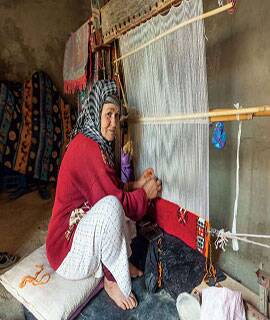
Berber Rugs And Carpets weaving is highly dependent on the female culture, and passed down traditionally within the home. The young apprentice expected to learn the the different looping techniques, patterns, color ranges and motifs. Historically women wove carpets for their families, and men traditionally produced carpets that were more specialized as professional master weavers. These inspiring designs were motivation for more modern carpet fabrication.
Historically, moroccan rugs where a preferred gift for people in elite social classes and where used to adorn palaces and other sacred places. The more urban carpets also used at prayer mats and rugs in the hammam. Travelers who are interested in Berber carpet weaving should check out the Weavers Cooperative, and the Berber Carpet Demonstration, a famous exhibition.
Climates. The Berber tribes developed a variety of weaves to be adaptable to different climates. The moroccan rugs in the mountains have larger loops, are more loosely knotted to provide protection against the cold. In warmer climates the rugs made with a finer weave. The carpets in the Middle Atlas used as sleeping mats, and in regions with mild climates knots tend to be 2cm high.